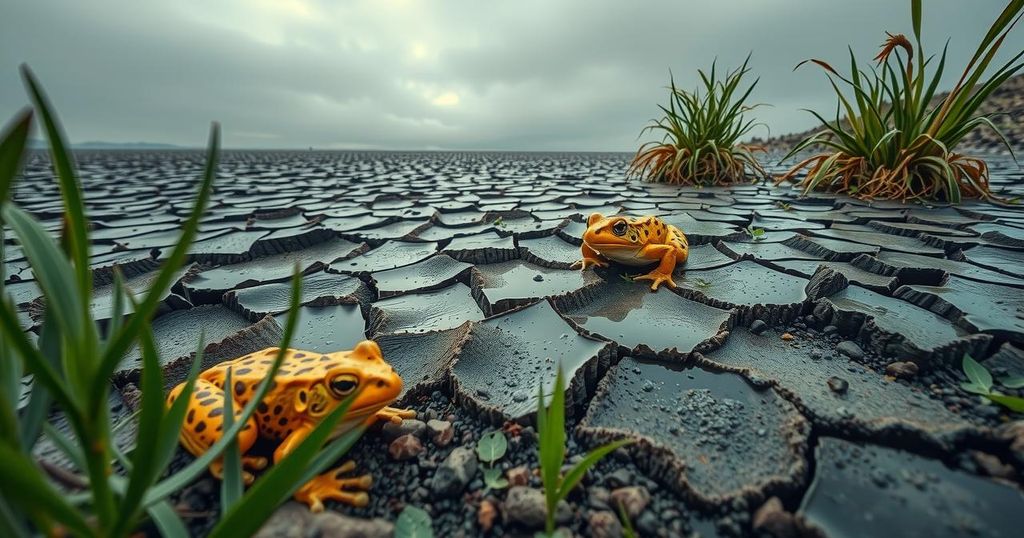A recent study highlights the alarming reality that climate change could severely impact frog and toad habitats, with projections indicating up to 33% habitat loss if global temperatures rise by 4°C. The research reveals that amphibians are at a heightened risk due to their sensitivity to water and emphasizes the need for further investigation into the specific effects of drying climates on these species.
Recent research indicates a concerning decline in amphibian habitats due to climate change, particularly affecting frogs and toads. A study published in Nature Climate Change reveals that with a global temperature rise of 2°C, there is an anticipated 6.6% loss of critical habitats for these species, while a 4°C increase may result in an alarming 33% of their habitats becoming arid. The authors of the study emphasize the need to address the effects of climate-induced drying on animal species, especially for water-dependent groups like anurans. They note that amphibians, already on the decline, are experiencing intensified threats as climate change has led to 39% of these species being listed as threatened on the IUCN Red List. Given their reliance on moist environments for physiological functions, understanding the implications of temperature fluctuations and drought on these sensitive creatures is imperative. The analysis suggests that by the late 21st century, approximately 36.1% of the geographical areas inhabited by frogs and toads may confront heightened risks of drought, primarily affecting regions in the Americas, southern Africa, Europe, and southern Australia.
The precarious state of amphibian populations is significantly exacerbated by climate change. Frogs and toads are particularly vulnerable due to their need for moist habitats, which are critical for their survival and reproduction. The phenomenon of climate-induced drying is an essential aspect that has not been adequately explored compared to the broader implications of climate warming. This study aims to shed light on the specific threats posed by drying environments to these amphibian species, offering crucial insights into their future amid predicted temperature increases.
In essence, the findings underscore the urgent need to monitor and mitigate the impacts of climate change, particularly the drying of habitats critical for frogs and toads. With significant portions of their environments at risk, conservation efforts must be prioritized to protect these sensitive species. This study calls for more comprehensive research into the vulnerabilities of water-sensitive animals as climate conditions continue to evolve.
Original Source: cosmosmagazine.com






